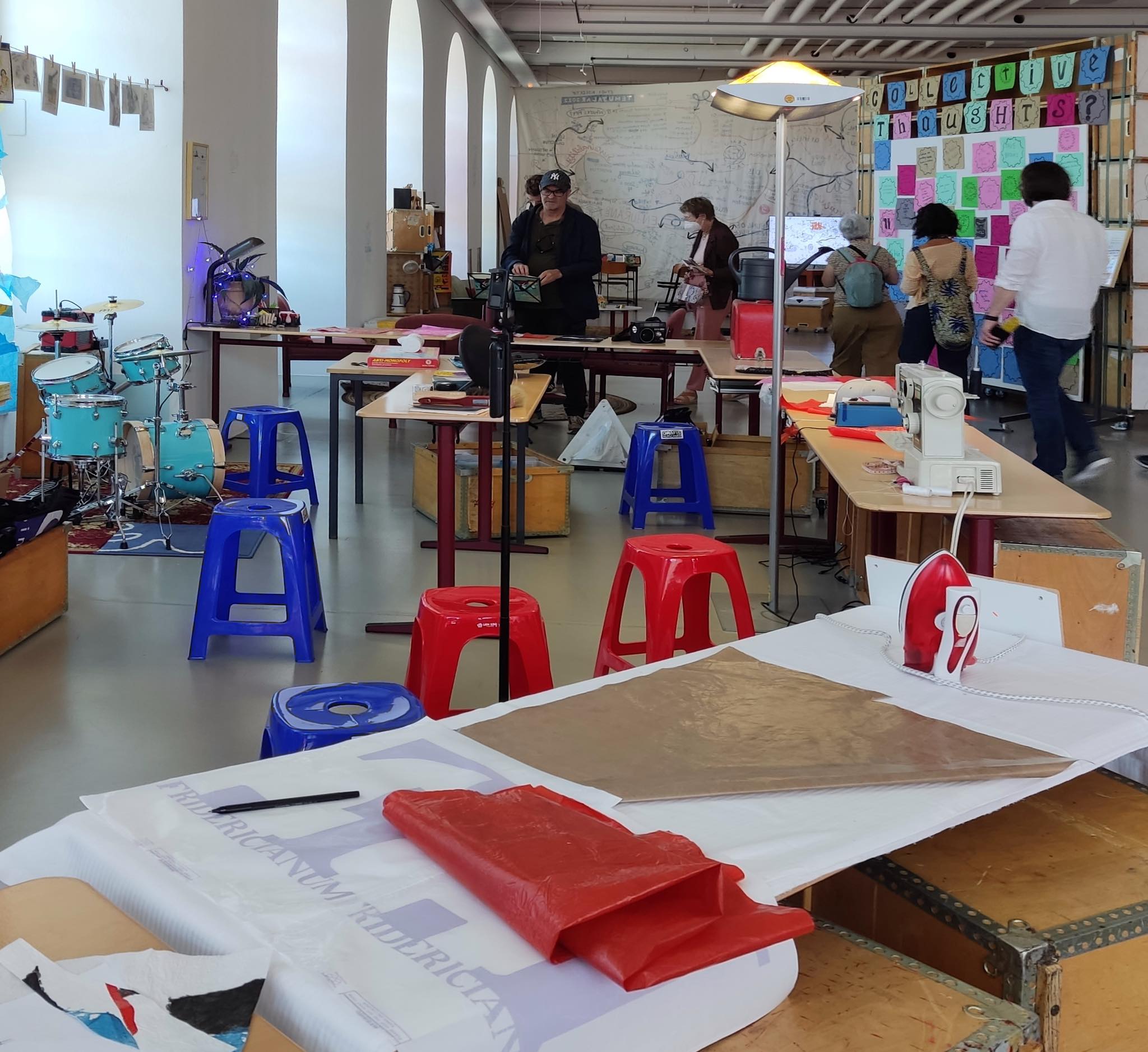Documenta 15, heterogeneous, accessible, resplendent in-process and incomplete, present-here-and-now, and affirmative, is soft-imperialist, globalist art at its apex.
New Edge — it’s gentle, loving, soothing, and light, art for the righteous decline of the Western enlightenment project and paean for the rise of the Global South, salvaging what it finds useful from Western ruins, vainglory, pollution, and precarity, to make the most of a post-coloniality which is still dependent on most-colonial funding arteries.
Come visit delicate, intimate, care-filled workshop spaces splayed open and, lovingly translated into English from whatever local language for your convenience.
With all the best intentions of the curatorial collective Ruangrupa, what we see in the main halls of the Friedricianum resonates with a vexed generosity which is simultaneously also the involuntary surrender to global capital which unites all oppressed peoples of the world, both in Indonesia and in Germany.
We see here the evidence of desperately creative social practices, prototypes for the coming world of de-industrialization and involuntary migration, low-key joyously so, as it must be, for life must go on, and no one knows better how to make unbearable life livable than those who emerge today from the trauma of dozens of generations of oppression without exit: the colonized, the women, the queer.
This exhibition shimmers and heaves with good intentions, it is an offering, a blessing to the imperialist elites who prefer global misery to multipolarity, those whose ill-gotten gains the art-world for decades served to launder, here again obediently performing exoneration rites.
Don’t worry about us, we will be ok.
Indeed it seems as if the community-building-and-sustaining strategies of long-oppressed people featured in the quinquennial display, this brilliant comet of Western humanist values at the pinnacle of the global artworld schedule, are there to be advertised for the employment in care work of the prematurely elderly.
The buckled and frail West, unable to consummate its grand vision for the future, which was only ever self-delusionary gangsterism now learns to tone down its ambitions and show it through the world of others, a collective from Indonesia.
“Euromerica” as the glorified gangster culture, now seeks in the gentle disobedience of the Global South its palliative care. What we see in this exhibition is not a Global South emancipated to chart its own course, we see a Global South resplendent in its poverty as a model for the soon-to-be pauperized masses of the Global North.
“Look how these noble natives have endured generations of the most extreme exploitation and slavery and still maintained their dignity. Dear Europeans, you can do it too!”
“Look at the ingenious, loving, caring, pains-taking practices they have developed under the most adverse circumstances, wearing their plastic footwear and kitchenware, spreading and then twisting these recyclables to amuse their children. Look how serene and happy one can be to be poor.”
This is the message for Europeans delivered diligently by the board of cultural elites who hired the Indonesian curatorial team to lead this edition of Documenta.
Documenta 15 is a masterpiece of conciliation with a Western project in decline, that can not wipe its own ass.
The last few editions have signaled a departure from the elevation of Western self-recrimination, guilt and exasperation, white macho histrionics, rich-dudes burden, and stigmata of imperialist bad consciousness. Today, this sad-Nietzschean-prometheanism has been replaced with sanctimonious displays of captive feminine care-work, in jaunty colors, its grim perseverance.
Joy James’ notion of captive maternals is helpful to understand this aesthetic, where monumentality has dissolved into everyday practices, resonating Beuys 7000 Oaks occasionally still silently shading citizens of Kassel from the harsh June sun, but here ever more precarious, provisional, and incidental.
The captive maternal must prepare its progeny to survive or even succeed in futures without prospects of emancipation.
With its bright and airy panoply of practices, performing perseverance, and cultivating community to compensate where the state withdraws, Documenta 15 comes across as congenial and deferential as possible to the powers that be.
Even in its more wrathful moments, thanks to the works of great artists who somehow have passed the neoliberal filter set by the curators, the exhibition remains more or less faithful to Documenta’s foundational purpose: to spread nihilism and more importantly, exclude the communist horizon.
